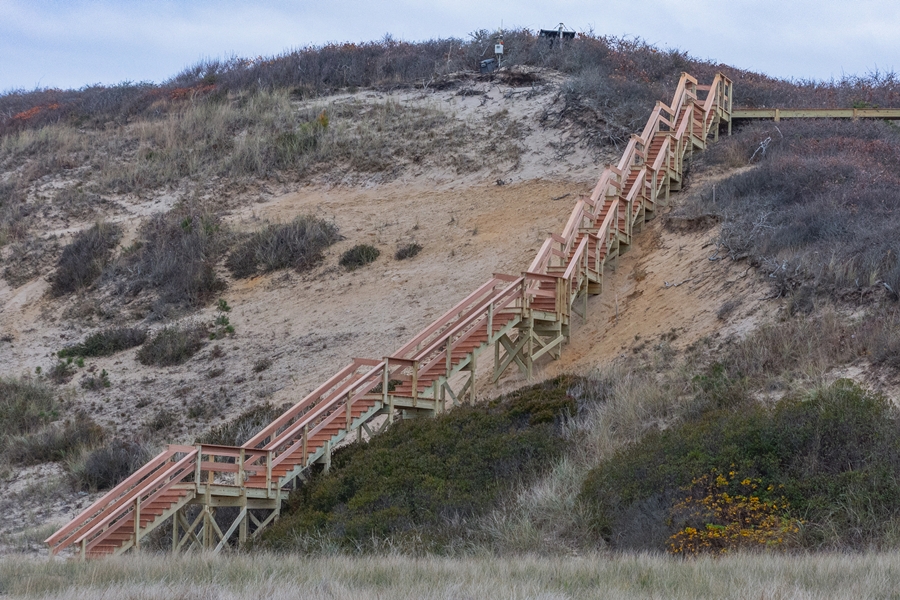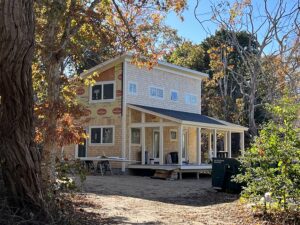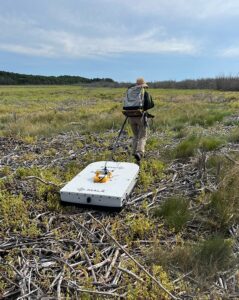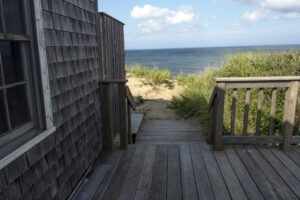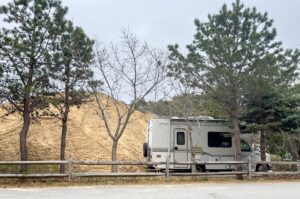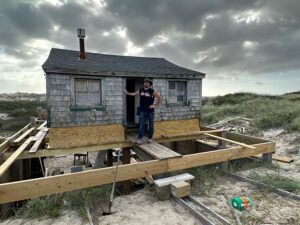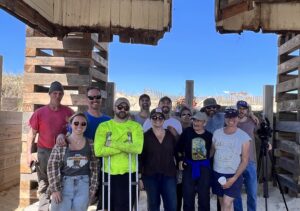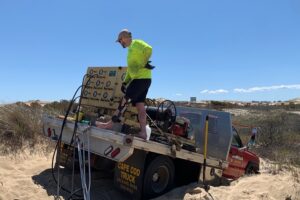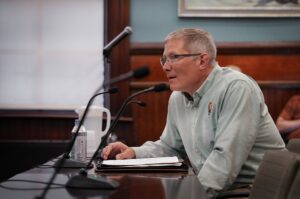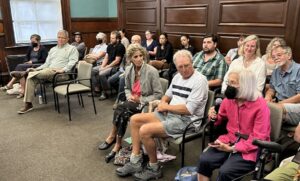WELLFLEET — A dispute over the interpretation of rules for accessory dwelling units (ADUs) in the Cape Cod National Seashore is the latest example of differences between local and federal officials — and it may be coming to a head because of a new state law.
Established by federal legislation in 1961 to protect natural and cultural resources, the Seashore includes 43,000 acres stretching through six towns from Chatham to Provincetown. Minimum zoning standards were promulgated by federal authorities for land in the Seashore, but there have been occasions when Seashore officials and local towns disagree on what’s allowed.
An accessory dwelling unit is a small residential living space located on the same lot as another home. It can be within the primary residence or an addition to the main house. It can also be freestanding.
The state’s recently enacted Affordable Homes Act allows ADUs by right in districts zoned for single-family residences.
Seashore Supt. Jennifer Flynn has said ADUs are not authorized under the 1961 federal standards and therefore are not allowed in the National Seashore. Adding an ADU would result in two dwellings on one lot, which is prohibited, Flynn has said.
But Wellfleet and Truro have interpreted the federal law differently.
At an Aug. 19 Wellfleet Select Board meeting, the town’s land use attorney, Beth Pyles, said that ADUs are allowed in the National Seashore District according to her interpretation of the enabling legislation because they are “accessory” to a main dwelling.
Accessory uses are allowed in the district, she said.
Because she sees no conflict with federal rules, Pyles said, the town must comply with the state’s Affordable Homes Act and treat ADUs as a by-right use. Restrictions on height, size, and setbacks and other requirements would still apply, she said. The act allows ADUs of up to 900 square feet.
Based on Pyles’s opinion, the select board directed the town’s appointees to the National Seashore Advisory Commission, which has been discussing the issue, to represent ADU approval as Wellfleet’s position. Pyles noted that the town’s zoning bylaw should be amended accordingly to make it clear to property owners what is allowed.
Select board member Sheila Lyons, who abstained from the vote, disagreed, saying she believed the National Seashore should be afforded more protection, not less. In an Aug. 26 phone interview, Lyons said ADUs are expensive, so only the wealthy can build them. They would not benefit those who need affordable housing, she said.
Michael Fee, a Truro resident and the town’s alternate on the Seashore Advisory Commission, said on Aug. 26 that Truro’s position was “that the Seashore’s regulations allow for ADU uses as long as they’re in keeping with the character of the district. Our argument is that if you interpret the federal standards in a reasonable manner, you would find they do allow ADUs under certain circumstances, and that the interpretation the Seashore has taken is overly restrictive and, in our opinion, not accurate.”
Some History
The 1961 Seashore standards permit residential uses of “improved,” or previously developed, properties. Properties with houses under construction before 1959 could remain in private ownership once towns enacted zoning bylaws based on the federal standards. Wellfleet, Truro, and Eastham, the three towns with a significant number of single-family homes in the Seashore, enacted bylaws establishing a minimum lot size of three acres.
Eastham and Truro adopted a minimum frontage requirement of 150 feet; Wellfleet’s is 200 feet.
Once local zoning was in place, Seashore officials allowed residential property owners to obtain “certificates of suspension of condemnation,” which prevented the Park from seizing their properties by eminent domain. Those certificates pass to the new owners when properties are sold.
Most undeveloped lots in the Seashore were taken by eminent domain by the National Park Service in the 1960s and ’70s, although a handful were overlooked. Communications Director Katie Riconda said Truro has 15 undeveloped properties in the Seashore, but only one has the required three acres needed for development. Town Planner Paul Lagg reported that Eastham has 14 undeveloped lots in the Seashore. He did not specify their sizes.
In total, more than 2,000 transactions shifted ownership of properties to the National Park Service. Landowners were compensated based on fair market appraisals.
About 600 developed and undeveloped Seashore lots remain in private ownership.
In an Aug. 26 email, Deputy Supt. Leslie Reynolds said the Park’s records show that there are 123 privately owned properties in Eastham, 234 in Wellfleet, 227 in Truro, and just one in Provincetown.
“As a matter of practice, we look at each tract individually when reviewing requests or issues that come to our attention, as land ownership can be complex,” Reynolds said.
Property owners who violate the 1961 National Seashore standards can lose the certificates that protect their properties from being taken by eminent domain.
Seashore officials, however, have conceded that the Park Service doesn’t have the money to pay fair market price as required under eminent domain law.
Orleans attorney Benjamin Zehnder, who frequently represents property owners with proposals under review by local boards, pointed out that the Seashore’s threat doesn’t have much bite.
“Anybody who owns a house anywhere in this country is subject to a taking by eminent domain,” Zehnder said. “The state or the federal government or the town could come take your property tomorrow to build a road or school or whatever.”
Past Debates
The ADU debate is just the most recent dust-up between Seashore officials and the towns or individual property owners.
Construction of the 5,000-square-foot Blasch house on Chequessett Neck Road in Wellfleet was opposed by Seashore officials in 2008. The Seashore attempted to secure a preliminary injunction in state Land Court to stop construction after the town’s building commissioner had issued a building permit, but the request was denied. The Seashore appealed but again lost.
Shortly after the house was built, Wellfleet enacted size restrictions on houses.
In 2022, National Seashore officials opposed a plan to construct a 3,000-square-foot house on a 1.3-acre lot off Cable Road in Eastham. The lot was part of a 100-year-old subdivision plan with paper streets. Most of the undeveloped lots in the plan had been taken by eminent domain shortly after the Seashore was established. The lot in question was under the same ownership as another lot, and both were listed on a single deed. The planning board had recognized them as two lots and approved the proposed house despite pushback by the Seashore.
Then-Supt. Brian Carlstrom argued the construction would result in two single-family houses on a single tract. Carlstrom also pointed out that three acres are required for a building lot and the lot in question was 1.3 acres.
Attorney Zehnder, who represented the owner, said the subdivision predated the adoption of zoning laws, so the lots were not subject to them.
The proposed house was not built, and the lot was put on the market shortly after the appeal period expired on the planning board’s approval of the plan.
The National Seashore did not appeal.

